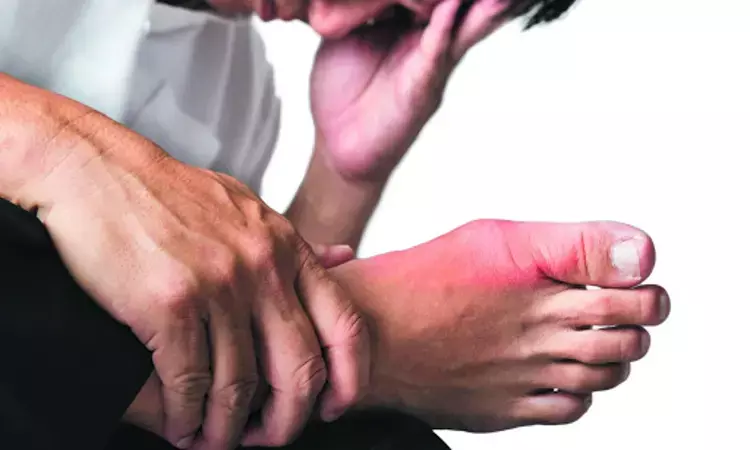- Home
- Medical news & Guidelines
- Anesthesiology
- Cardiology and CTVS
- Critical Care
- Dentistry
- Dermatology
- Diabetes and Endocrinology
- ENT
- Gastroenterology
- Medicine
- Nephrology
- Neurology
- Obstretics-Gynaecology
- Oncology
- Ophthalmology
- Orthopaedics
- Pediatrics-Neonatology
- Psychiatry
- Pulmonology
- Radiology
- Surgery
- Urology
- Laboratory Medicine
- Diet
- Nursing
- Paramedical
- Physiotherapy
- Health news
- Fact Check
- Bone Health Fact Check
- Brain Health Fact Check
- Cancer Related Fact Check
- Child Care Fact Check
- Dental and oral health fact check
- Diabetes and metabolic health fact check
- Diet and Nutrition Fact Check
- Eye and ENT Care Fact Check
- Fitness fact check
- Gut health fact check
- Heart health fact check
- Kidney health fact check
- Medical education fact check
- Men's health fact check
- Respiratory fact check
- Skin and hair care fact check
- Vaccine and Immunization fact check
- Women's health fact check
- AYUSH
- State News
- Andaman and Nicobar Islands
- Andhra Pradesh
- Arunachal Pradesh
- Assam
- Bihar
- Chandigarh
- Chattisgarh
- Dadra and Nagar Haveli
- Daman and Diu
- Delhi
- Goa
- Gujarat
- Haryana
- Himachal Pradesh
- Jammu & Kashmir
- Jharkhand
- Karnataka
- Kerala
- Ladakh
- Lakshadweep
- Madhya Pradesh
- Maharashtra
- Manipur
- Meghalaya
- Mizoram
- Nagaland
- Odisha
- Puducherry
- Punjab
- Rajasthan
- Sikkim
- Tamil Nadu
- Telangana
- Tripura
- Uttar Pradesh
- Uttrakhand
- West Bengal
- Medical Education
- Industry
Ultrasound findings may predict risk of future gout flares

Baseline monosodium urate (MSU) deposits and inflammation identified by ultrasound (US) are independent predictors of gout flare-ups during a 12-month period, says an article published in Rheumatology Journal.
Gout flares are a defining characteristic of the condition and a key aspect of how patients feel the condition. Gout flares are also a clinical sign of disease severity, are included in the 2016 preliminary remission criteria for gout, and are supported by the OMERACT as a primary outcome area in clinical studies. Edoardo Cipolletta and colleagues carried out this investigation in order to determine whether US results suggestive of MSU deposits and US-detected inflammation predict the incidence and the frequency of flares over the course of 12 months in gout patients.
In this prospective, observational, single-center trial that lasted 12 months, gout patients who had been receiving urate-lowering treatment for at least the previous 6 months were included sequentially. There was a nested case-control analysis. Cases were individuals who self-reported at least one gout flare throughout the follow-up period, whereas controls did not. The first MTP joints, knees, ankles, wrists, second MCP joints, and elbows were all assessed in the US. The MSU deposits were classified as present or missing in the US results using the Outcome Measure in Rheumatology criteria.
The key findings of this study were:
1. 81 people with gout were recruited, and 71 of them finished the research.
2. A median of 2.0 flares were experienced during the course of a year by thirty (42.3%) of the 71 patients.
3. At baseline, cases showed a higher US load of MSU deposits and a stronger Doppler signal than controls.
4. In multivariate analyses, the incidence and frequency of flares over a 12-month period were substantially correlated with baseline US scores showing MSU deposits and US-detected inflammation.
In this tiny experiment, ultrasound results were indicative of future gout flare-ups. Understanding the significance of ultrasonography in clinical practice, such as identifying individuals more likely to benefit from prolonged courses of anti-inflammatory prophylaxis, would require additional study in this field.
Reference:
Cipolletta, E., Abhishek, A., Di Battista, J., Grassi, W., & Filippucci, E. (2022). Ultrasonography in the prediction of gout flares: a 12-month prospective observational study. In Rheumatology. Oxford University Press (OUP). https://doi.org/10.1093/rheumatology/keac367
Neuroscience Masters graduate
Jacinthlyn Sylvia, a Neuroscience Master's graduate from Chennai has worked extensively in deciphering the neurobiology of cognition and motor control in aging. She also has spread-out exposure to Neurosurgery from her Bachelor’s. She is currently involved in active Neuro-Oncology research. She is an upcoming neuroscientist with a fiery passion for writing. Her news cover at Medical Dialogues feature recent discoveries and updates from the healthcare and biomedical research fields. She can be reached at editorial@medicaldialogues.in
Dr Kamal Kant Kohli-MBBS, DTCD- a chest specialist with more than 30 years of practice and a flair for writing clinical articles, Dr Kamal Kant Kohli joined Medical Dialogues as a Chief Editor of Medical News. Besides writing articles, as an editor, he proofreads and verifies all the medical content published on Medical Dialogues including those coming from journals, studies,medical conferences,guidelines etc. Email: drkohli@medicaldialogues.in. Contact no. 011-43720751


